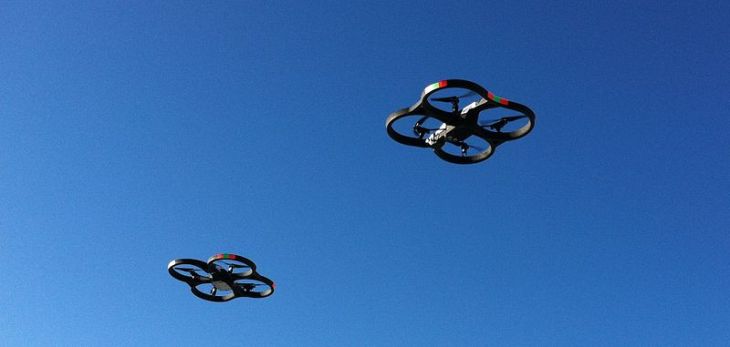Editor’s note: Michael Dahmen is the CEO of FLAIRICS and SPECTAIR Group.
Drones are an auspicious future technology that can service a vast number of professional industries. Businesses around the world are discovering the great benefits that drones can provide. However there is a notable difference in the economic growth of the drone industry in Europe compared to the rest of the world.
For example, in Europe, the number of companies deploying drones for commercial use has risen significantly in the past three to four years. UAVs are becoming a business sector with the greatest potential. So what can the U.S. learn from Europe’s growing commercial drone industry?
In recent years, Europe has experienced an increase in the amount of new businesses utilizing drones to provide either B2C or B2B services for countless industries. In France alone, the number of approved drone operators has increased from 86 in 2012 to 431 in 2014. Currently, Europe has over 1,000 operators.
The European drone industry is not only thriving simply because of the great technology behind the UAVs, but because the EASA is encouraging and creating new categories, as well as rules and regulations to help this market reach its greatest potential.
The European Aviation Safety Agency vs. FAA
When the leaked FAA documents displayed a level of understanding of the benefits and support of commercialized drones that came as no surprise. But the pace at which these rules will take into effect is simply staggering.
The FAA’s current integration roadmap provides insight as to when commercial drone use will be approved. So while this is great progress, it’s also very slow progress. Currently there are only a few businesses that can utilize drones commercially, notably Amazon and CNN.
In the U.S., civilian UAVs that are cleared to fly must be flown within the line of sight, away from areas such as airports and nature reserves and up to an altitude of 150 meters and with a weight maximum of 55 pounds.
UAV operators need to be able to see the drone personally without any assistance from a GPS or geo-referencing tool and need to acquire a license in order to operate. For example, a person who wants to fly a drone for recreational purposes has no real restrictions on utility, but a person and or company using drones for business-related purposes would require an operational license that can over time accrue cost.
The European Aviation Safety Agency (EASA) recently published its Vision 20/20, which serves as an overall inclusive proposal for the future of the aviation regulatory system, similar to the FAA integration roadmap.
The EASA also proposes three new categories of drones that help to better regulate UAVs which are now used in industries such as filming, farming and parcel deliveries. UAVs under the lowest “risk category” would include low-energy aircraft, including model planes, and would not require any license, unlike the FAA.
Requirements proposed by the EASA for commercial operations are a lot more lenient than the regulations proposed by the FAA; for example the EASA would not require a license for commercial usage.
Business Is Booming
According to the Drone Project, the drone industry will generate an economic growth of $90 billion in the next five years, and 30K drones will soar in the sky by 2020. However, Germany alone, from 2012 to 2013, has experienced an increase in drone use, almost 5x greater than predicted. Unique drone companies in Europe help make the industry such an exciting and flourishing market. Companies like Delair-Tech create small, long-range drones capable of providing pipeline surveillance.
They offer long-range drone solutions and unique image-processing techniques to help companies make better decisions by incorporating automated algorithms and drone-acquired data. Their DT18 was the first and only UAV in the world certified for “beyond visual line of sight” (BVLOS) operations.
Another great example of an exciting drone company is Danish Aviation System. Danish Aviation Systems are dedicated to cutting-edge drone solutions. They’re experts in drones for agriculture, land surveying, mining and research.
Europe is producing some of the most technologically advance drones globally, and drones are estimated to be 10 percent of the European aviation market ($15 billion euros) by 2025 as well as create 150K jobs by 2050.
We’re in This Together
In the EASA’s Vision 20/20, the agency suggests that when national authorities have a lack of resources or expertise, they should be able to delegate some of their oversight functions to other authorities or to the EASA in order to make sure that no safety risks are overlooked. So while EASA sees the benefits drones offer economically, they also see the same benefits on a global scale for neighboring countries that might not have the same expertise and/or resources in the market.
Countries that are in the process of approving drones for commercial use can learn tremendously from the EASA. The support and leniency have allowed the drone market to make a significant impact on the European economy. Once other countries follow suit and allow the market thrive globally, the sky is the limit.
